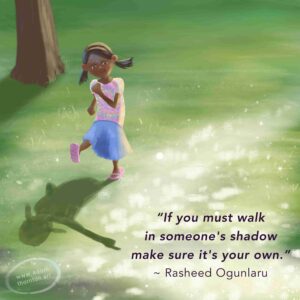Diversity is one of the few constants and universal truths.
It is something that I have researched extensively and now routinely consider every time I create a new illustration. But it is not limited to just race and gender and there are lessons to learn for the content we all produce, be it illustrations or marketing material.
While there are differences between people and groups and places, what does diversity mean exactly and what can we learn about it that will inform us in our marketing? In addition, where should our long-term considerations be in relation to our future customers’ appetite for diversity?
The Cambridge dictionary gives a heartwarming definition of diversity:
“the fact of many different types of things or people being included in something”
This definition encourages us to pay attention to who’s included and who’s represented and who’s not and why that matters to our marketing.
A longstanding tenet of big brand’s marketing efforts shared a specific goal: to aim squarely at an overwhelmingly older, white, male audience.
In the past this made sense because this group represented the majority of consumer’s buying power. However, today that marketing approach is not only obsolete, but it can also damage your brand. Why is this?
First, it ignores the changed reality of today’s market.
In 2020, for the first time, millennials in the United Kingdom became the largest generational cohort, surpassing the baby boomers.
This reflects what is also happening in other major markets, such as the USA.
Millennials are now in their prime spending years. That’s a big shift that carries some important consequences for marketers.
One of the key distinctions is that, as buyers, millennials are intrinsically different from the old, white generation. Millennials are more conscientious and prefer experiences over products. This is largely because they are the most diverse generation in history, which means that today’s marketers can no longer develop campaigns that focus on one demographic, as in the past. In fact, to do this would certainly appear at best old-fashioned but more likely out-of-touch and, at worst, bigoted.
Millennials are a generation that has inclusion at the centre of their purchasing decisions. An enormous 70% choose one brand over another based on the diversity and inclusion presented by the brand’s marketing.
This means it is essential for today’s organisations to embrace a concept known as diversity marketing (see link at the end of part 2 of this article). It is also important to be aware that these changes are not going to go away.
In a 2021 global survey of children’s media and tech, key findings were that children want their television channels and services to be inclusive. Dubit Trends surveyed eight countries and found that two to 17 year olds want all of their media to have a diversity of characters including people from different backgrounds and ethnic groups, and show a greater representation.
Interestingly, nearly half of all global children say that the shows they’re watching right now don’t have enough characters from different backgrounds, showing characters with disabilities or different skin colours.
They also say that the characters in the TV shows they watch just don’t seem like the boys, girls, men or women that they come across in real life. Individual people of all ages are nuanced and have differing approaches to life which makes them more interesting. Even young people can see that.
In my illustrations I seek to normalise how we engage in diversity e.g. a caucasian/Western boy wearing a South Asian kurta and following an Eastern spiritual path, and a South Asian girl learning that it is ok to pursue her own path in life.


These findings are powerful and reflect what we know about children’s development.
Particularly during childhood and into adolescence children are deeply interested in who they are and who they’re becoming. They are thinking about these fundamental questions “who am I?”, “who am I going to become?” and they’re looking to peers, family and the media which plays a major role
in their everyday lives.
Children spend a lot of time on media, not as passive consumers but they are engaging the questions of “where am I in this story?”, “how does this connect to what I know?”
This is certainly being inspired by the parents who are looking for more diversity in the content that their children are being exposed to. For example, ever more parents want media with characters from their own ethnicity and have it be much more representative which includes 75% of black families and 65% of multi-racial families.
An organisation’s marketing can become a great leveller in where we find representation of ourselves and share experiences or perspectives to our own families. We want to expose and share with our own families what they may not have in their own community. This means not only from their own lived experience but also being able to see some representation from other backgrounds, other cultures and diversity.
Six in ten parents say that marketing and media has prompted conversations about diversity, so we know that parents are not only looking for it but they’re also bringing it into the conversations at home.
There’s nothing like children talking about the marketing and media they’re consuming to get them very chatty. Sometimes you can’t get them to stop talking about it! There’s no doubt it develops formative memories, which is very beneficial to an organisation, so it’s a great way to initiate what can be a heavy conversation with children.
We know from the field of developmental psychology that the sense of self children are forming during these years is critical because it becomes the foundation on which they build relationships with other people, the outside world, and also based their future purchasing decisions.
It also shows the sort of futures they imagine for themselves and impacts their academic engagement and pursuit of different careers. So the closer the diversity your marketing aligns to a young person’s overall well-being and identity the better.
These are not frivolous constructs but are at the core of who young people become.
So think critically and carefully about what kind of messaging young people get from you and your organisation. The data shows that children and families want representation and diverse storytelling in what they see in their marketing and media.
In part 2 of this guide…
we will look deeper into how our future customers are being shaped in relation to diversity and what marketers and creatives can do to align with them.

